PALLAVA DYNASTY 275-897 CE
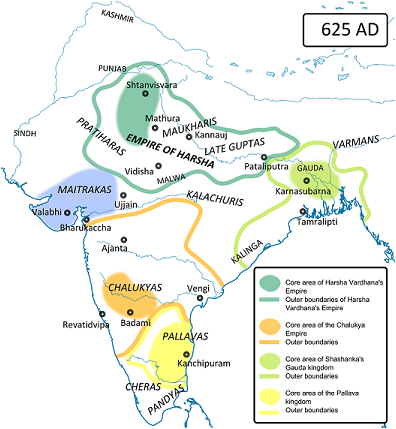
KINGDOMS of DECCAN & SOUTHERN INDIA
- In the Peninsula, Ikshvakus Succeeded Satavahans
- Ikshvakus were succeeded by Pallavas
- Capital – Kanchipuram
- Long conflict with Chalukyas in the west , Chola and Pandya in the south
- Language – Prakrit -> Sanskrit -Tamil
- Ultimately defeated by Chola in beginning of 10th century
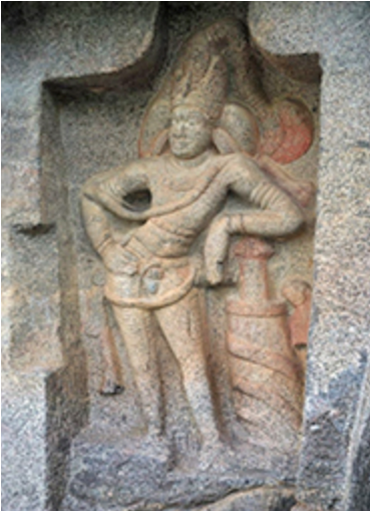
KINGDOMS of DECCAN & SOUTHERN INDIA
Mahendravarman I (600-630)
War with Chalukya king Pulakesin II – lost lot of territory
Built lot of cave temples
Converted from Jainism to Shaivism
Talented musician and painter
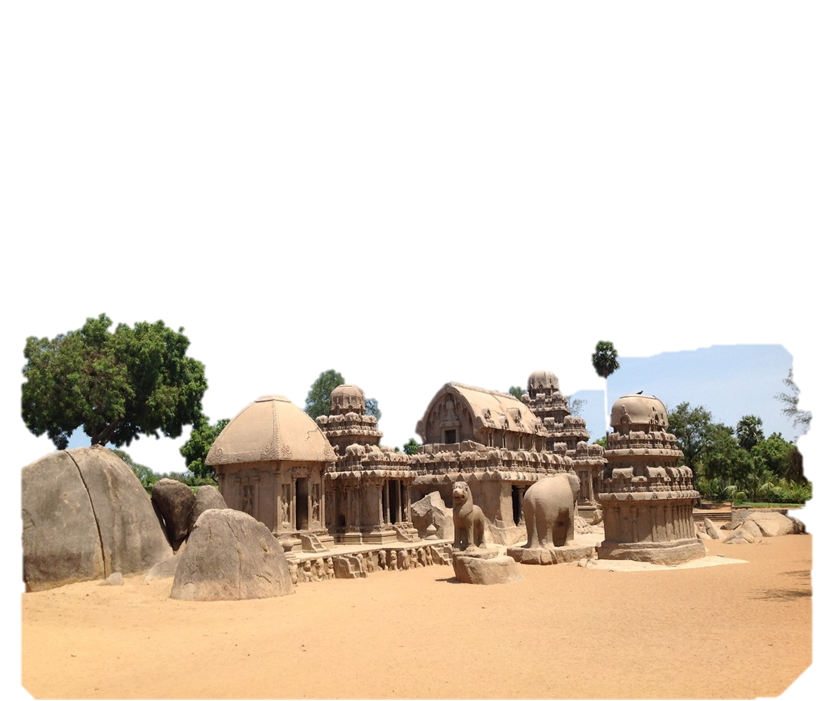
KINGDOMS of DECCAN & SOUTHERN INDIA
Nasimhavarman I (630-688)
‘Mamalla’ – great wrestler
Established Mammallapuram (Mahabalipuram )
MONOLITHIC RATHA TEMPLES – Panchapanadava rathas
Defeated Chalukyans and destroyed Vatapi
Naval expedition to Sri Lanka
Hieun Tsang visited Kanchi
Nasimhavarman II (695-722)
- Shore temple at Mahabalipuram
- Kailasnathar temple at Kanchi
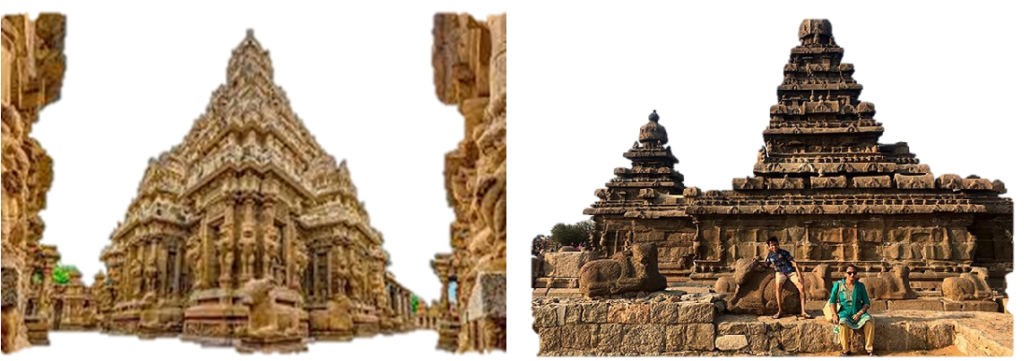
- Brahmadeya – Land grants to Brahmins
- Devadhana – land grants to Temples
- Rise of Shaivism and Vaishnavism; decline of Buddhism and Jainism
- Temple building + Bhakti reformation = Hinduism revival
- Cave temple → Monolithic rathas → Structural temples
- Beginning of Dravidian temple architecture
The Three Chalukyas
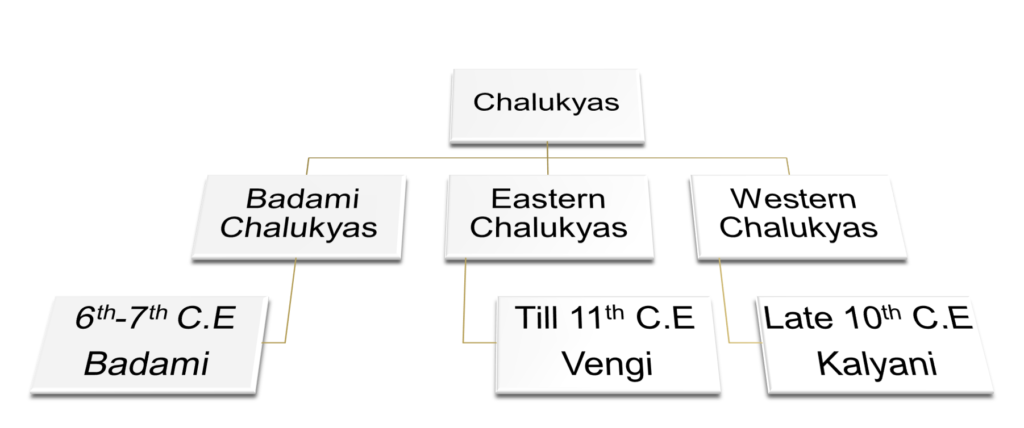
Badami Chalukyas: The earliest Chalukyas with their capital at Badami (Vatapi) in Karnataka. They ruled from mid-6th They declined after the death of their greatest king, Pulakesin II in 642 AD.
Eastern Chalukyas: Emerged after the death of Pulakesin II in Eastern Deccan with capital at Vengi. They ruled till the 11th century.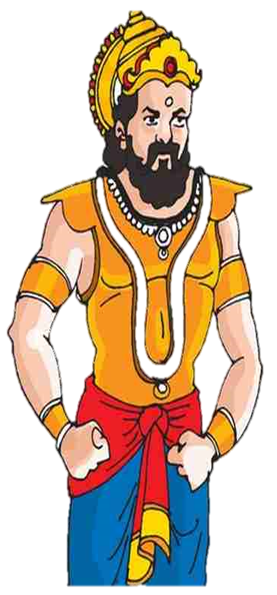
Western Chalukyas: Descendants of the Badami Chalukyas, they emerged in the late 10th century and ruled from Kalyani (modern-day Basavakanlyan).
The Chalukya dynasty reached its peak during the reign of Pulakesin II.
His grandfather Pulakesin I had created an empire around Vatapi.
Pulakesin II subjugated the Kadambas, the Gangas of Mysore, the Mauravas of North Konkan, the Latas of Gujarat, the Malavas and the Gurjars.
He also succeeded in getting a submission from the Chola, Chera and Pandya kings.
He had also defeated King Harsha of Kannauj and the Pallava king Mahendravarman.
Chalukyas of Vatapi 543-755
- Capital – Vatapi/Badami (North Karnataka)
- Founder – Pulakesin I

- Northern Maharashtra/West Deccan → Vakataks succeeded Satavahans
- Vakataks were Succeeded by Chalukyas of Badami
- Brahmin Hindus – Vedic religion
- Most important and powerful king
- War with Pallavas – score 1-1
- Defeated Harsha at Narmada – stopped his southward expansion
- Aihole inscription by Ravikriti – court poet
Chalukyas
Other branches –
- Eastern Chalukyas (of Vengi) – 624-1189 AD :
- Coastal Andhra Broke away during Pulakesin II reign
- Western Chalukya
- (Chalukyas of Kalyani) 973-1189 AD Karnataka
Chalukyas -Art and Architecture
- Vesara style of temple architecture – Aihole, Badami and
- Cave temple architecture – Ajanta, Ellora
- Cave Paintings – Badami cave temple and in the Ajanta caves
- Many ‘experimental’ temples were built before perfecting the style
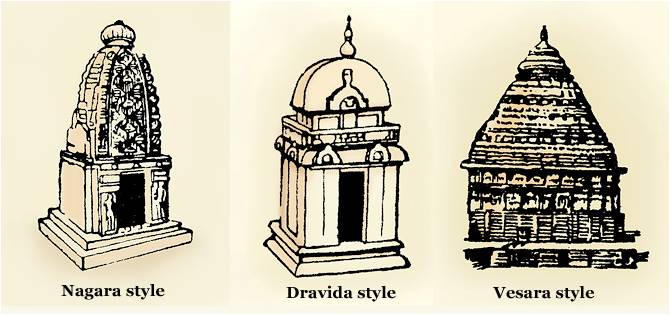
The temples under the Chalukyas are a good example of the Vesara style of architecture. This is also called the Deccan style or Karnataka Dravida or Chalukyan style. It is a combination of Dravida and Nagara styles.
Aihole temples: Ladh Khan temple (Surya Temple), Durga temple, Huchimalligudi temple, Jain temple at Meguti by Ravikirti. There are 70 temples in Aihole.
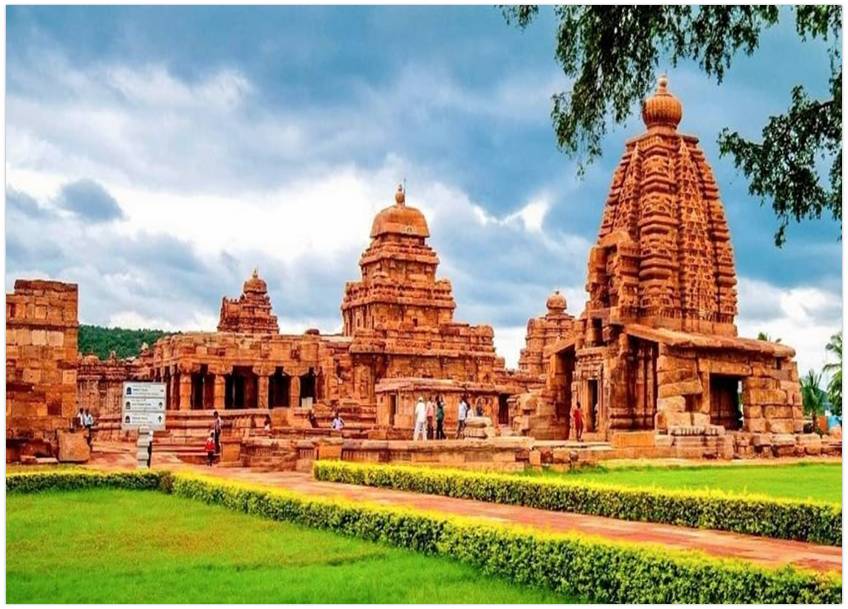
Pattadakal Temple
Pattadakkal: is a UNESCO World Heritage site. There are ten temples here – 4 in Nagar style and 6 in Dravida style. Virupaksha temple and Sangameshwara Temple are in Dravida style. Papanatha temple is in Nagara style.
Rashtrakutas 755 – 975
- Dantidurga – Founder
- He defeated the Chalukyas and established his rule
- Capital – Manyakheta/Malkhed (North Karnataka)
- Kannada origin -Kannada language mother tongue
- Jainism flourished under them (They were Brahmin)
- Paramount power of Deccan in 8th- 10th century
- Conflict with Gurjar Pratihars and Palas
Rashtrakutas- Origin
The name ‘Rashtrakuta’ in Sanskrit means ‘Country’ (Rashtra) and ‘Chieftain’ (Kuta). This explains their lineage from the time of the Mauryan Emperor Ashoka the Great (3rd century BCE) when they were primarily small clan heads in different parts of India.
The Rashtrakutas considered themselves descendants of Satyaki.
Historians differ on the question of their origins.
It is evident from a few Chalukya kings’ inscriptions that they were vassals of the Chalukyas.
Rashtrakutas were of Kannada origin and their mother tongue was Kannada.
Dantidurga (also knows as Dantivarman, r. until 756 CE), who was a feudatory of the Badami Chalukyas, defeated their King Kirtivarman II in 753 CE.
Dantidurga’s ascent started from the time when he helped the Chalukyas in their successful war against the incoming Arab army (between 731 and 739 CE).
Soon, it became apparent that he was not satisfied in being just a vassal state and started exerting his influence through military aggression.
Rashtrakutas- Krishna I [756-773 CE]
Dantidurga died without a male heir and was succeeded by his uncle Krishna I
He expanded his kingdom by invading the Ganga territory and defeating them, by subjugating the Konkan territories and sending his own son to the Eastern Chalukya kingdom of Vengi and accepting their submission without a fight.
Krishna I is also culturally very important in the history of India because he was the man behind the construction of the exquisite Kailasa Temple of Ellora (a UNESCO World Heritage site now).
Rashtrakutas- Amoghavarsha (814 – 878 A.D)
The greatest king of the Rashtrakuta dynasty was Amoghavarsha I son of Govinda III.
Amoghavarsha I set up a new capital at Manyakheta (now Malkhed in Karnataka State) and Broach became the best port of the kingdom during his reign
Amoghavarsha I was a great patron of education and literature.
Amoghavarsha was converted into Jainism by Jinasena, a Jaina monk.
Suleman, an Arab merchant, in his account called Amoghavarsha I as one of the four greatest kings of the world, the other three being the Caliph of Bagdad, the king of Constantinople and the emperor of China.
Amoghavarsha ruled for 63 years.
Rashtrakuta Administration
- Provinces – Rashtras, under the control of Rashtrapati
- Districts – Vishayas, governed by Vishayapatis
- Bhukti ( 50 – 70 villages ), under charge of Bhogpatis
- Each village was headed by village headman called Grama Mahajana or Grama Mahattara who in turn was helped by village elders
Imperial Cholas (848-1279 CE)
The founder of the Chola Empire was Vijayalaya, who was first feudatory of the Pallavas of Kanchi.
He captured Tanjore in 850 A.D.
He established a temple of goddess Nishumbhasudini (Durga) there
The Chola Empire was based in the Kaveri River Valley, which runs southeast through Karnataka, Tamil Nadu, and the southern Deccan Plateau to the Bay of Bengal.
At its height, the Chola Empire controlled not only southern India and Sri Lanka, but also the Maldives.
It took key maritime trading posts from the Srivijaya Empire in what is now Indonesia, enabling a rich cultural transfusion in both directions, and sent diplomatic and trading missions to China’s Song Dynasty (960 – 1279 CE).
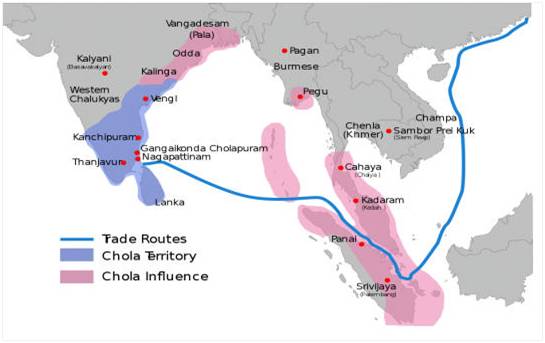
 Rajaraja I (985-1014 CE)
Rajaraja I (985-1014 CE)- Defeated Cheras, Pandyas and Chalukyas of Kalyani
- Annexed Northern Srilanka + Maldives • 1010 CE –
- Rajrajeshwara/Brihadeeshwara temple at Thanjavur(Tanjore) – classic example of Dravid temple arch. style
Brihadeshwara Temple, also known as Raja Rajeswara Temple, is dedicated to Shiva and is located in Thanjavur (Tamil Nadu).
Thanjavur lies in the delta of the Cauvery River.
It is one of the best examples of the Dravidian style of temple architecture built by Chola emperor Raja Raja Chola I ( 985-1014 AD) between 1003 AD and 1010 AD.
The Dravidian style of temple architecture flourished roughly from the 8th century to about the 13-14 century AD.
The temple consists of a pyramidal spire and is adorned with sculptures and paintings inside as well as outside.
The temple entered the UNESCO World Heritage Site list in 1987 and is also a part of “Great Living Chola Temples” along with the Brihadisvara Temple at Gangaikondacholapuram and the Airavatesvara Temple at Darasuram.
Imperial Cholas (848-1279 CE)
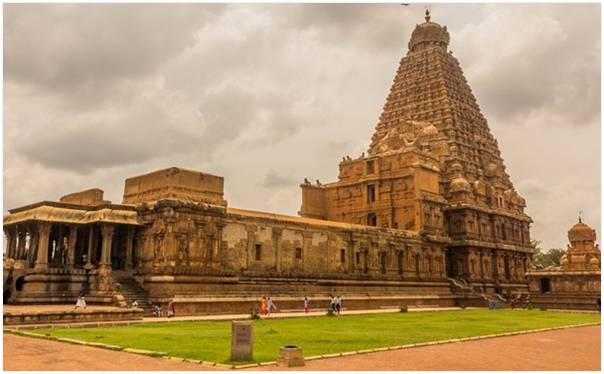
Rajendra I 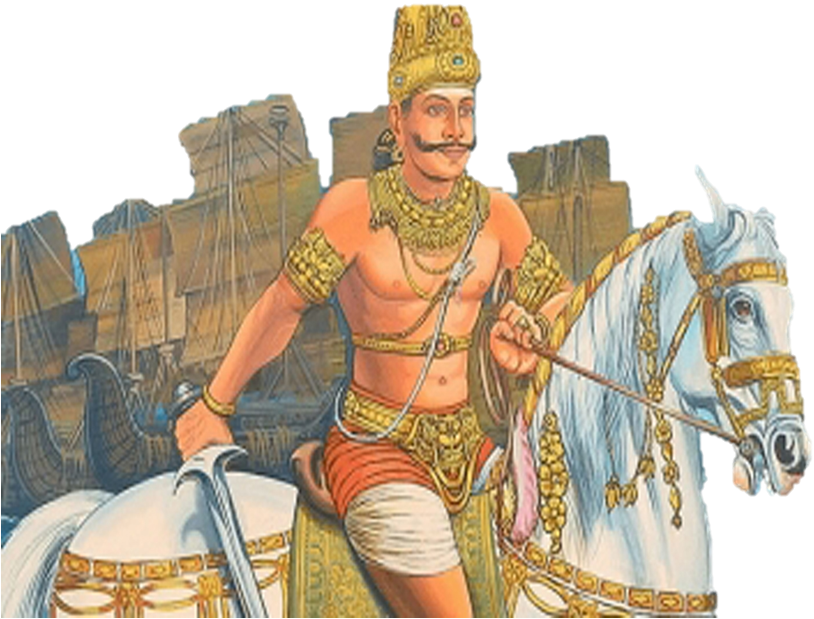
- Annexed whole Srilanka (south)
- Expedition to Bengal – defeated Mahipala I of PAL dynasty; Assumed the title of Gangaikondachola
- Conquered Malay Peninsula & converted Bay of Bengal to Chola lake for trading purposes with China
- Founded new capital – Gangaikondacholapuram -The town of the Chola who took over Ganga (water from Ganga)
- Built Gangaikondachola Temple
TN to celebrate birth anniversary of Rajendra Chola-I as govt event
The Tourism, Culture and Religious Endowments Department under the Tamil Nadu government announced on Wednesday that it will celebrate the birth anniversary of Rajendra Chola-I, one of the greatest emperors of the Chola dynasty, as a government event.
The birth anniversary of Rajendra Chola-I is celebrated in the Tamil month of ‘Aadi’, but as the day is already over, the department has decided to celebrate the anniversary from next year onwards in grand style.
Rajendra Chola is considered by Tamil historians and students of history as a great warrior and his exercises in the sea were unparalleled.
Disintegration of the Cholas
The Chola Empire began to disintegrate due to the rise of feudatories like the Kadavarayas and the emergence of the Pandya Empire.
Rajendra III (1246-1279) was the last Chola ruler.
The Chola Kingdom was annexed by the Pandyan Empire
Chola Administration
- Empire was divided into Mandalams (provinces)
- Mandalams were further divided into Valanadu or Nathus (group of villages)
- Towns- nagar , council – Nagarattara (traders mainly)
- Local self-government in villages with mainly two assemblies Ur – general council Sabha –
- Council of village elites/elders
Society & Religion
- Caste system prevalent – Brahmins & Kshatriyas enjoyed powers
- Shaivism & Vaishnavism flourished –temples, Math (educational centres) were built
- Temples – centre of economic activity
- Devdasi system emerged – dancing girls attached to temples
- Shaivism saints – Nayanars
- Vaishnava saints – Alvars
- Rajaraja and Rajendra were both Shaivites
Art & Culture
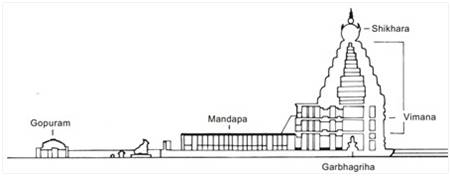
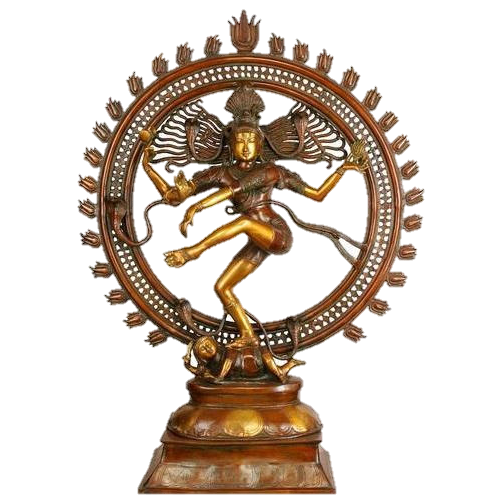
- Dravid style of building temples attained great heights
- Gopurams, Mandapam (pillared), Vimana
- Ceremonies performed by Devadasis
- Bronze statues of Nataraj or dancing Siva
- Chola paintings – on the walls of Narthamalai and Tanjore temples.
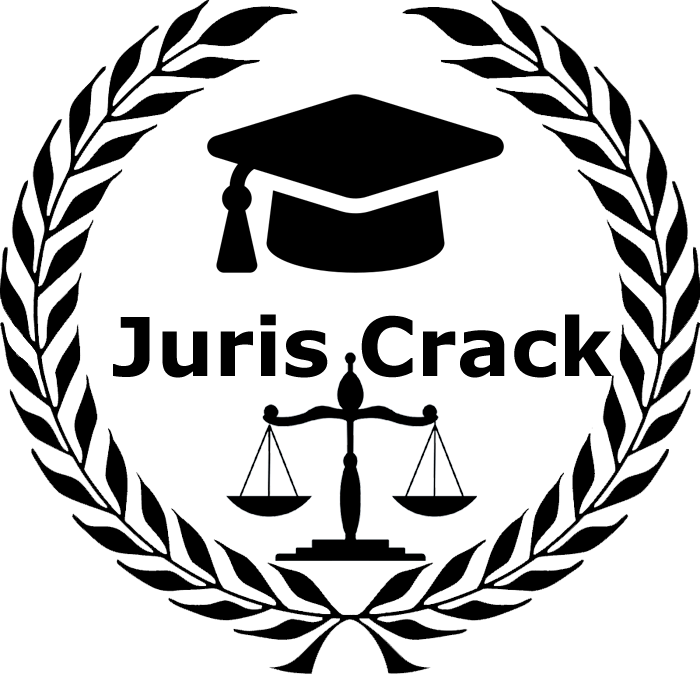




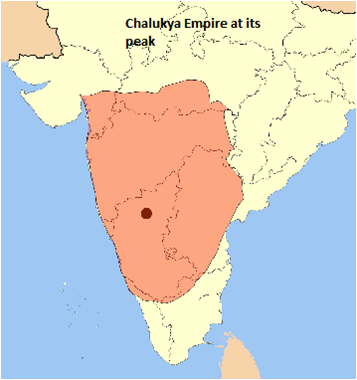
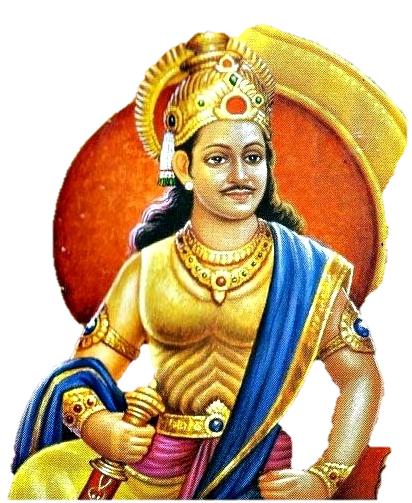
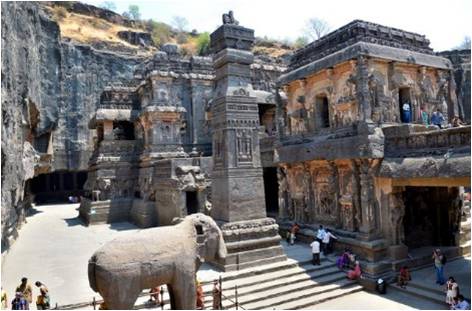
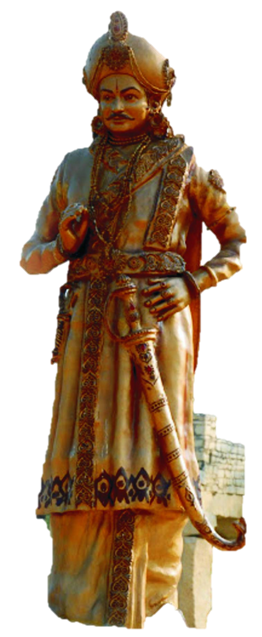
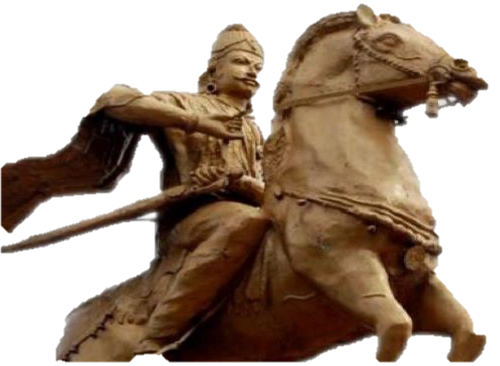 Rajaraja I (985-1014 CE)
Rajaraja I (985-1014 CE)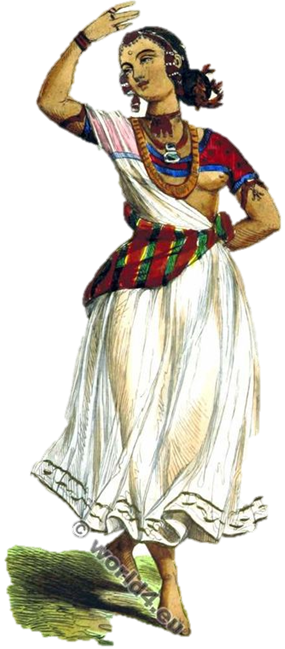



No comment